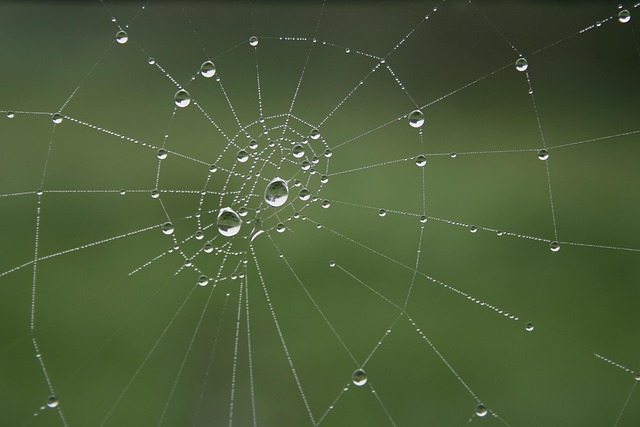Understanding spider behavior is crucial for effective infestations management. Modern, eco-friendly spider infestation solutions leverage integrated pest management (IPM), combining biological, cultural, physical, and targeted chemical methods. These include heat treatments, ultrasound devices, and natural predators to disrupt spider behavior without harming ecosystems or biodiversity. Safety protocols are vital for protecting individuals involved in mitigation efforts, ensuring effective and sustainable solutions for residential, commercial, and agricultural settings.
In many parts of the world, spiders are a common nuisance, with their intricate webs blanketing spaces both indoors and out. This article explores advanced solutions for managing spider populations and webs, delving into understanding spider infestations, comparing traditional vs. innovative control methods, and highlighting safety measures in spider mitigation. Discover long-term management strategies that not only protect your living spaces but also consider environmental sustainability, providing effective yet eco-friendly spider infestation solutions.
Understanding Spider Infestations: Behavior and Habitat
Understanding Spider Infestations: Behavior and Habitat
Spider infestations can be a significant concern for both residential and commercial spaces, as these arachnids are not only unsightly but also potentially harmful. To effectively address spider infestation solutions, it’s crucial to grasp their behavior and preferred habitats. Spiders are primarily nocturnal creatures that thrive in dark, secluded areas. They often find shelter behind furniture, under appliances, or within cracks and crevices on walls and ceilings. Their webs serve both as a capture mechanism for prey and a means of protection.
Knowing these habits allows for targeted prevention strategies. Regular cleaning, sealing entry points, and maintaining good lighting in affected areas can significantly deter spiders. Professional pest control services also employ advanced techniques like heat treatments and targeted spraying to disrupt spider populations and their webs effectively. By combining environmental modifications with professional interventions, it’s possible to manage and eliminate spider infestations, providing a safer, more comfortable living or working environment.
Traditional vs. Advanced Spider Control Methods
In the realm of spider control, traditional methods have long been the go-to solution for many homeowners and businesses dealing with unwanted arachnid guests. These methods often involve chemical insecticides, which can be effective in the short term but come with drawbacks such as potential health risks to humans and pets, environmental impact, and resistance buildup in spider populations. As a result, advanced spider control solutions are emerging as more sustainable and efficient alternatives.
Modern approaches leverage integrated pest management (IPM) strategies, combining biological, cultural, physical, and chemical methods. For instance, introducing natural predators like spiders’ enemies—such as certain wasp species—can help keep the population in check. Additionally, advanced technologies like heat treatments, ultrasound devices, and innovative sticky traps offer targeted and non-toxic solutions. These cutting-edge spider infestation solutions not only ensure effective management but also promote a safer and more environmentally friendly approach to dealing with these eight-legged inhabitants.
Innovative Solutions for Long-Term Management
In the quest for effective spider infestation solutions, innovative technologies and strategies are transforming traditional pest management. One cutting-edge approach involves the use of targeted, eco-friendly chemicals that disrupt spider behavior without causing significant environmental harm. These modern treatments can be tailored to specific locations, ensuring minimal impact on non-target species and ecosystems.
Additionally, integrated pest management (IPM) methods offer a comprehensive solution. By combining mechanical, biological, and chemical controls, IPM strategies create a balanced ecosystem that discourages spider populations from thriving. This long-term approach involves regular monitoring, habitat manipulation, and the introduction of natural predators to spiders, providing sustainable spider infestation solutions for homes, businesses, and agricultural settings.
Safety Measures and Environmental Considerations in Spider Mitigation
When addressing spider infestations, safety measures are paramount. Professionals employing spider mitigation techniques must prioritize the use of eco-friendly products and methods to minimize environmental impact. Many conventional pest control solutions can harm non-target organisms, disrupt ecosystems, and leave harmful residues. Spider infestation solutions should focus on targeted treatments that eliminate spiders without affecting beneficial insects or other wildlife. This approach respects biodiversity and maintains a balanced ecosystem.
In addition to eco-friendly practices, ensuring the safety of individuals involved in spider mitigation is crucial. Proper training, protective equipment, and adherence to safety protocols are essential when dealing with spider infestations. These measures protect both workers and residents, preventing exposure to potentially harmful chemicals or physical dangers associated with spider bites. By combining environmental considerations and robust safety protocols, effective spider infestation solutions can be achieved while preserving the well-being of people and the planet.
In light of the above discussions, it’s clear that advanced solutions are crucial for managing spider populations and webs effectively. By understanding their behavior and habitat, we can employ innovative methods such as integrated pest management (IPM), biological control, and modern technology to combat infestations. These strategies, combined with safety measures and environmental considerations, offer long-term, sustainable spider infestation solutions. Remember that professional knowledge and tailored approaches are key to achieving a spider-free environment while preserving the balance of nature.
